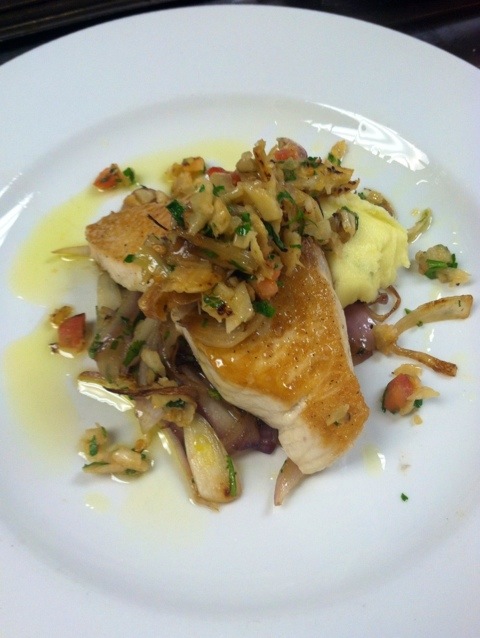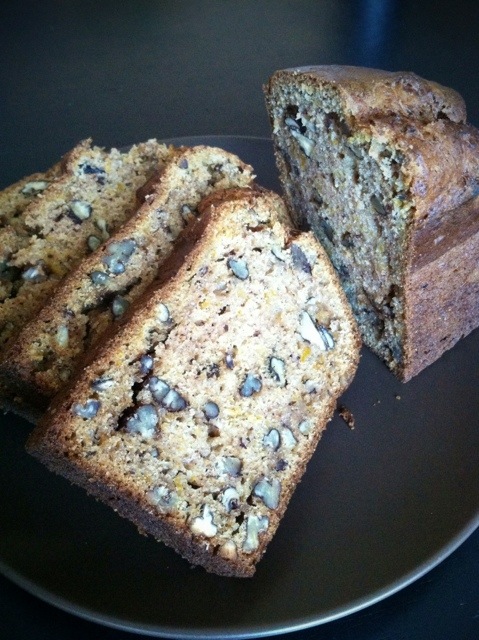Ok, so it is that time of the year again. The air is cool and crisp, in fact winter was just extended. The beads and masks are out. The Saints are march and the bands are playing. The cops are right around the corner and we just got “Fat” on Tuesday–it’s Mardi Gras time!!! Which in turn also singles the beginning of Lent.
Now most of us, know the history and the purpose of lent. Although, over the years Lent has been changed to giving up beef on Fridays. Thus fish Fridays was born. Now just because it is Fish Friday, it does not mean it has to be plan or boring, nor does it have to be a Clam Chowder or Fish’n’Chips. A Fish Friday can be and should be fun and exciting. There is a whole ocean of fish out there — explore the world of possibilities.
This story is about one fish that is great, and if your not careful it will swim on by. As with most fish, this fish in-particular is great seared, baked, grilled and (my personal favorite) crusted. Ok, this fish is not crusted, but hey we can’t always have what we want. However, this fish is fresh and vibrant, it is also a little different (which is the way I like it and want it).
Being the West Coast kid that I am, I usually bring most of my fish in from the Pacific. That is not to say that Atlantic Seafood is inferior; but, it is to say that fresher is better. You should always choose your seafood based on your location. As with housing, Seafood is all about location, location, location. Most seafood is already caught miles off the coast; and would it still be the freshest if it had to travel to another coast? Plainly, the closer to source you can acquire something, be it meat, veg or seafood, the better it will be.
Today’s fish is brought to you by the Fiji Islands and the letter E. T letter E is for Escolar, and not to be confused with Escarole (which is a beautiful green and a different story). Escolar is firm white fish. In fact, it is also known as a “White Tuna” at times. Escolar has a slightly buttery, rich flavor. Due to it’s natural flavor, Escolar holds up really well to spiciness; chili powder, cumin seeds, cilantro rub, jalapeños and other chilies are just a few examples of some spicy possibilities.
For all the positives of Escolar, there is one draw back. Escolar is considered a “fatty fish.” Most times, fatty fish will refer how it feels on your palate and how it will react with side dishes. To some degree, Escolar is no different, and yet still different. It is recommended not to eat more than 5-6 oz at a given time. There is a possibility of reeking havoc on your digestive system when eating more than 6oz at one time (unlike other “fatty fish”). Even though it sounds small, it is not. There is plenty of flavor to make up for the missing ounces on your pate; not to mention a standard fish portion is only about 7-8oz.
Again, for this fish, I did a quick play on various accompaniments as well as serving the fish in a non-traditional fashion; with Mashed Potatoes. Some may say that fish should not be served with mashed potatoes.
Why?
Some believe that a Mash is too heavy as well as too fatty that would over power fish. Mashed Potatoes are a great side and not just for beef. In my humble opinion, it is Mash Potatoes for all. Keep two things in mind though, the size of potato portion should be smaller than the size of the protein on the plate; and the type of fish will determine if it can handle mashed potatoes (lighter, flaker fish will less likely hold up).
Instead of a standard sauce, I finished the fish with a nice relish–a Fennel Bruschetta to be exact. Then the main ingredient of a standard Bruschetta is tomato; sub out tomato for Fennel and thus a Fennel Bruschetta is born. This will add a bit of citrus tones, and anise flavors (both of witch pair extremely well with fish). Relishes are a great way to complement fish with out overwhelming the fish–healthier too.
Escolar
4 pieces 5-6oz Escolar
salt/pepper
Fennel Bruschetta
1 each fennel
1 each lemon zest
1 each roma tomato
2 each garlic cloves
1/2 bunch parsley
1 tbsp olive oil
salt/pepper
Caramelized Cilantro Onions
1 each Red Onion
1/2 bunch Cilantro
salt/pepper
relish:
1. cut the top of the fennel off, followed with cutting it in half and coring.
2. Medium dice and sauté in a hot sauté pan, with a little oil till tender. set aside and let cool.
dice tomato and add to a bowl, then add zest, minced garlic and chopped parsley.
3. when cool, add fennel and mix. season with salt, pepper and oil. set aside.
Onions:
1. Slice onions thin.
2. sauté onions in a hot skillet with a touch of oil till tender and rich, warm brown.
3. pull from heat and season cilantro, salt and pepper.
Fish:
1. season both sides of the fish with salt and pepper
2. cook the fish in a skillet on medium heat, about 3-4 mins on each side…depending on the thickness of the fish.
3. when done the fish should be white and opaque
4. for plating- equally divide the onions to four plates. Lay of piece of fish on top of the onions, then top each fish with a spoon of the bruschetta. finally, drizzle with a bit of really good EVOO for a flavor boost.
The flavors of this dish jive extremely well together or independently. If you rather not sauté it, you can easily grill this fish. For an even more intense experience; quickly sear the fish on each side, then put every thing in a foil bag (onions-fish-relish in that order). Place the bag in the oven and roast for about 10-15 mins. No matter how you prepare the fish, don’t forget the wine!
When I think of Escolar, I taste a Sauvignon Blanc in mind. A nice wine with grassy notes and a slight citrus finish. A wine with a nice body and smooth finish. This wine screams white fish as well as “caramel” (a flavor achieved from searing food). Again, does it have to be a Sauvignon Blanc–No. Remember, wine pairing is to one’s own choosing. There is no right or wrong answer. ENJOY!

















